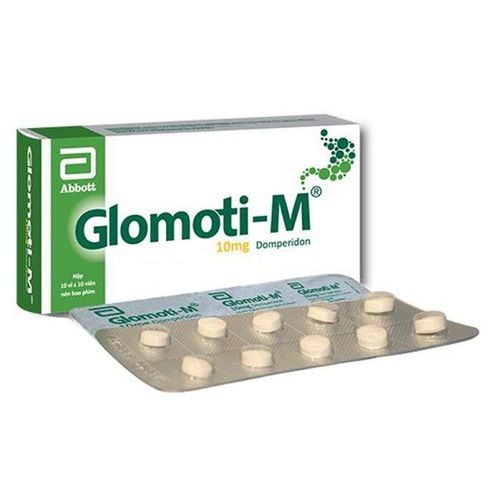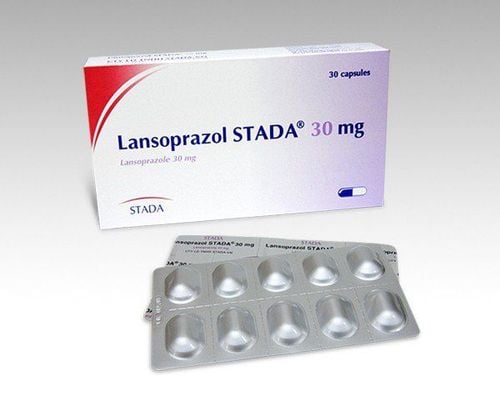This is an automatically translated article.
Reflux esophagitis (also known as gastroesophageal reflux disease) causes many discomforts for patients. In many cases, the disease can cause many dangerous complications. Recognizing the signs of esophagitis will help the treatment process be effective. So what are the signs of reflux esophagitis?
1. What is reflux esophagitis?
Reflux esophagitis is an inflammation and ulceration of the esophagus caused by stomach acid refluxing into the esophagus. The degree of inflammation of the esophagus depends largely on the time and frequency of contact between the esophageal mucosa and reflux substances, the disease can be reversed if detected and treated in time.
If this reflux phenomenon only occurs with a small frequency, in a short time, it will not affect the esophageal mucosa, this is said to be physiological reflux. The typical phenomenon is regurgitation, vomiting and is common in infants and young children.
From physiological reflux can become pathological when this condition occurs frequently, lasts long and causes many uncomfortable symptoms that affect daily activities. If the disease is not detected and treated in time, it will cause dangerous complications such as reflux esophagitis, Barrett's esophagus and esophageal cancer.
Until now, the cause of the disease is still unknown. The causes or rather risk factors for reflux esophagitis are:
Abnormalities of the lower esophageal sphincter (weakness or dilation). Esophageal motility is too weak. Esophageal too short, diaphragmatic hernia, esophageal tumor. Genetic factors. There is increased intra-abdominal pressure: ascites , obesity and pregnant women. Because there is increased pressure in the stomach and there is stagnation of food. Patients taking Steroid and Non-Steroid Drugs Due to Helicobacter pylori bacteria. Diet high in alcohol, beer and carbonated water.
2. Symptoms of reflux esophagitis
fasting gas: For the normal physiological activity of the stomach in the process of food metabolism, belching often occurs after eating, especially when eating full. However, if symptoms appear at a distance from a meal or belching on an empty stomach, there may be a dysfunction of the lower esophageal sphincter. This is considered one of the first basic manifestations of gastroesophageal reflux disease. Heartburn, heartburn: For adults, heartburn is considered the most typical symptom of reflux disease. The cause of this phenomenon is because the bile or acid in the stomach has come into contact with the mucosa, causing the patient to feel a burning sensation. Heartburn can spread from the epigastrium to the back of the sternum, sometimes in some patients to the lower pharynx or up to the parotid, accompanied by a sour taste in the mouth. Nausea and vomiting: When the disease has progressed to a more severe stage, substances that back up into the esophagus are not only gas and digestive juices but also include food, leading to vomiting and nausea. If this condition occurs right after eating, then the possibility of gastroesophageal reflux is quite large. Chest pain: Patients with gastroesophageal reflux disease often have symptoms such as tightness, chest pain, tightness in the chest and may radiate to the back or arms. The reason is that when the acid rises, it stimulates the nerve endings on the mucosal surface of the esophagus, causing pain for the patient in the part of the esophagus that runs through the chest. More saliva: The amount of saliva secreted more than usual is also a symptom to note of gastroesophageal reflux disease. Saliva is alkaline, so there may be reflexes to increase salivation to help neutralize the amount of acid that attacks the esophagus. Sore throat, hoarseness, cough, asthma: The reflux of stomach acid into the esophagus will lead to inflammation of the larynx, causing hoarseness, in addition, gastroesophageal reflux causes sore throat and cough for patients. , unlike the common cold, this condition can progress to chronic, gradually turning into asthma. The phenomenon of sore throat or hoarseness usually occurs after the patient has finished eating and is not accompanied by any other symptoms such as runny nose, sneezing, it is most likely a manifestation of gastroesophageal reflux disease. . Difficulty swallowing: When the phenomenon of gastroesophageal reflux is repeated many times, it will cause certain damage to the esophagus. In particular, the lining of the esophagus is edematous due to contact with stomach acid, causing choking and difficulty swallowing. Some lesions, when healed, can leave scars, thereby causing narrowing of the esophagus, increasing the patient's feeling of difficulty in swallowing. Bitter Mouth: Bile reflux can cause a bitter taste in some patients. If these symptoms are accompanied by heartburn, the patient is more likely to have two conditions including gastroesophageal reflux and bile reflux.
3. Methods of treating reflux esophagitis
3.1. Principles of treatment of reflux esophagitis Alleviate or resolve symptoms. Improve the patient's quality of life. Heal injuries. Prevention of complications of reflux esophagitis. 3.2. Medical treatment Non-drug treatment:
In eating and drinking: abstaining from spicy, sour, carbonated water, tea, coffee, alcohol, tobacco. Do not eat too much. Do not lie down immediately after eating, for a minimum of 30-60 minutes. Do not lie on low headrest, footrest 10 to 15 cm high. Do not wear clothes that are too tight. In obese patients, fat loss should be carried out. Stay positive, stress-free, and worry-free. Drug treatment: Use drugs according to the regimen such as proton pump inhibitors (Omeprazole, Rabeprazole, Lansoprazole ...) as prescribed by the doctor.
Please dial HOTLINE for more information or register for an appointment HERE. Download MyVinmec app to make appointments faster and to manage your bookings easily.













